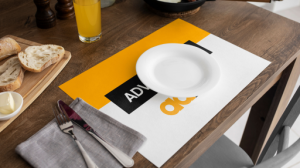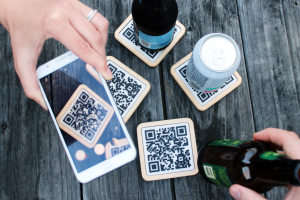Advertising is all about reaching your audience effectively while optimizing costs. Among the many unconventional methods, placemat advertising stands out for its ability to captivate a seated audience in a relaxed setting. But how do you know if your decision to advertise on placemats is paying off? Measuring the return on investment (ROI) for this marketing medium can help you determine its true effectiveness. In this blog, we’ll dive into actionable strategies, analytical approaches, and case studies to understand how to evaluate ROI when you advertise on placemats.
Why Advertise on Placemats?
Placemats are a unique advertising medium that provides undivided attention from customers during their meals. Restaurants, cafes, and diners create a perfect environment for your message to shine, as people naturally scan the space in front of them.
Key benefits include: 
1. High visibility in a captive setting.
2. Cost-effective compared to traditional media.
3. Opportunities to target local audiences.
4. Minimal competition for attention compared to digital ads.
While these benefits are promising, marketing professionals must assess whether their investment truly yields the desired results. Let’s explore the methods to measure ROI effectively.
Setting Clear Goals Before You Advertise on Placemats
The foundation of measuring ROI is establishing clear, measurable objectives for your campaign. Common goals include:
1. Increasing brand awareness.
2. Driving traffic to a website or physical store.
3. Promoting specific products or services.
4. Boosting sales within a target region.
By defining these objectives, you can align your metrics to gauge success accurately.
Analytical Approaches to Measuring ROI
Trackable QR Codes and URLs
One of the easiest ways to measure engagement is by including a unique QR code or URL on your placemat ad. When customers scan the code or visit the URL, you can monitor:
1. Click-through rates.
2. Landing page visits.
3. Conversion rates.
These metrics give you a direct link between your placemat campaign and online interactions, providing valuable insights into consumer behavior.
Coupon Codes and Discounts
Adding exclusive coupon codes to your placemat ads is an excellent way to track ROI. When customers redeem the code in-store or online, you can:
1. Attribute the sale to your placemat ad.
2. Measure the revenue generated from the campaign.
For example, a local pizzeria could feature a 10% discount code on their placemat ads and monitor how many customers use it.
Customer Surveys and Feedback
Encourage diners to participate in a short survey about your brand or offer incentives for their feedback. Questions could include:
1. “Did you notice our ad on the placemat?”
2. “What caught your attention about our offer?”
3. “Would you consider purchasing from us?”
This qualitative data can complement quantitative metrics and offer a deeper understanding of your campaign’s impact.
Sales Lift Analysis
A sales lift analysis involves comparing your sales data before, during, and after your placemat advertising campaign. For instance:
1. Did foot traffic increase in your store?
2. Was there a spike in online orders during the campaign?
By attributing these changes to your placemat ads, you can calculate the incremental revenue generated and evaluate your ROI.
Case Study: A Local Gym’s Placemat Campaign Success
A fitness center in a suburban town decided to advertise on placemats at nearby diners. Their ad featured a QR code offering a free one-week gym pass. Here’s how they measured ROI:
Objective: Drive new memberships.
Method: Trackable QR code and redemption metrics.
Results: 1,200 scans of the QR code.
400 free pass redemptions.
120 new memberships (10% conversion rate).
Revenue: $12,000 in new memberships against a $1,500 advertising cost.
This campaign yielded a remarkable 700% ROI, proving the effectiveness of placemat advertising when combined with trackable elements.
Challenges in Measuring ROI for Placemat Advertising
While measuring ROI is essential, there are potential challenges:
1. Limited Tracking in Offline Channels
Unlike digital advertising, it’s harder to directly link offline consumer behavior to your placemat ad. However, combining online and offline strategies (e.g., QR codes or dedicated phone numbers) can bridge this gap.
2. Attributing Results to Multiple Campaigns
If your business runs multiple marketing campaigns simultaneously, isolating the impact of placemat advertising can be tricky. To address this, consider timing your placemat campaign independently for clearer results.
3. Variability in Audience Engagement
The effectiveness of your placemat ad may depend on factors such as design, message clarity, and the restaurant’s foot traffic. Testing different creative approaches can help identify what resonates best with diners.
Tips to Maximize ROI When You Advertise on Placemats
1. Design Eye-Catching Ads
Your ad should immediately grab attention. Use bold colors, clear messaging, and high-quality visuals to make your ad stand out.
2. Focus on Local Targeting
Placemat advertising is ideal for reaching local audiences. Ensure your messaging and offers are relevant to the demographic frequenting the restaurant.
3. Collaborate with Restaurants
Work closely with restaurant owners to place ads in locations that align with your target audience. High-traffic establishments with a loyal customer base are prime candidates.
4. Test and Optimize
Run A/B tests with different designs, offers, and call-to-action (CTA) strategies. Analyze the results and refine your approach for future campaigns.








